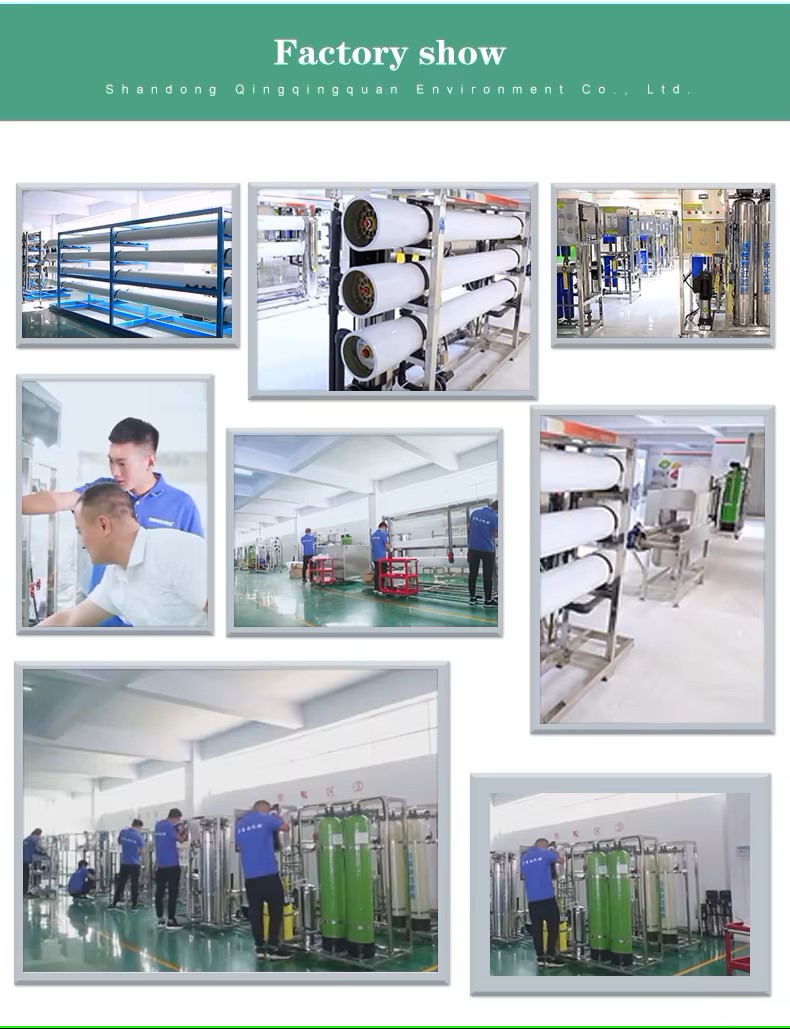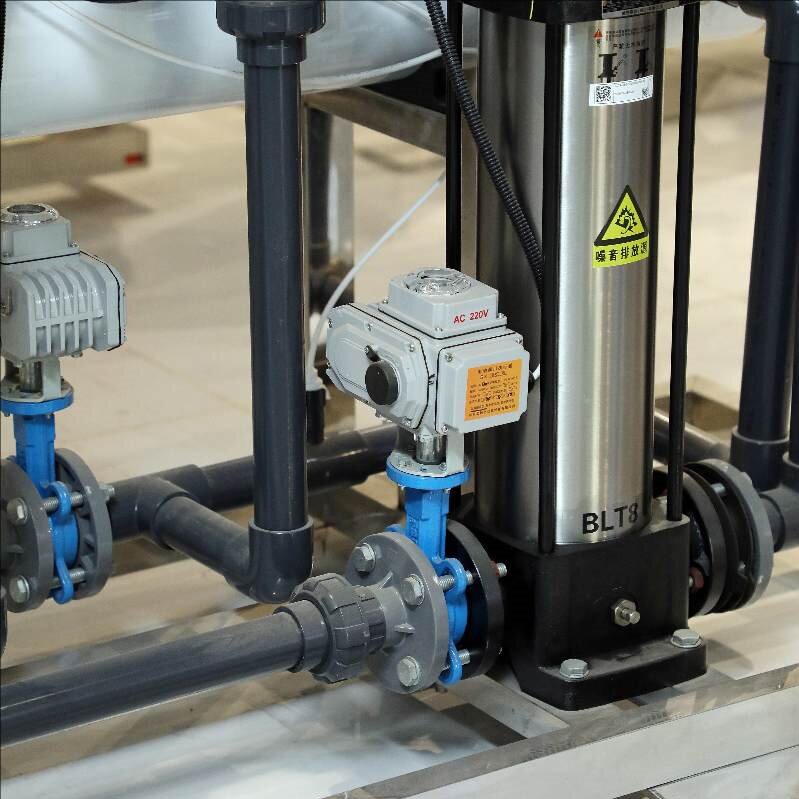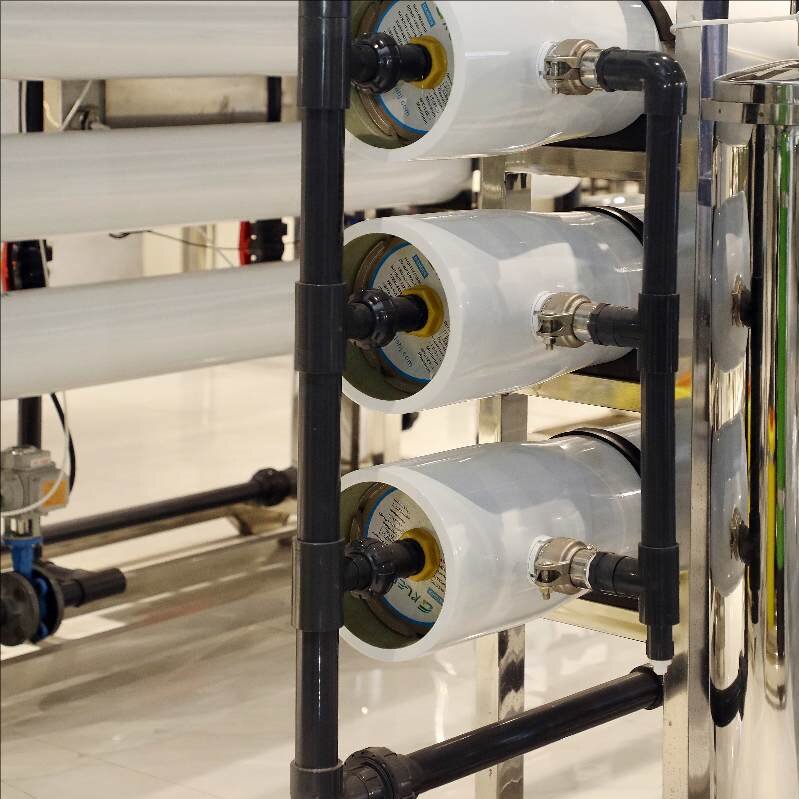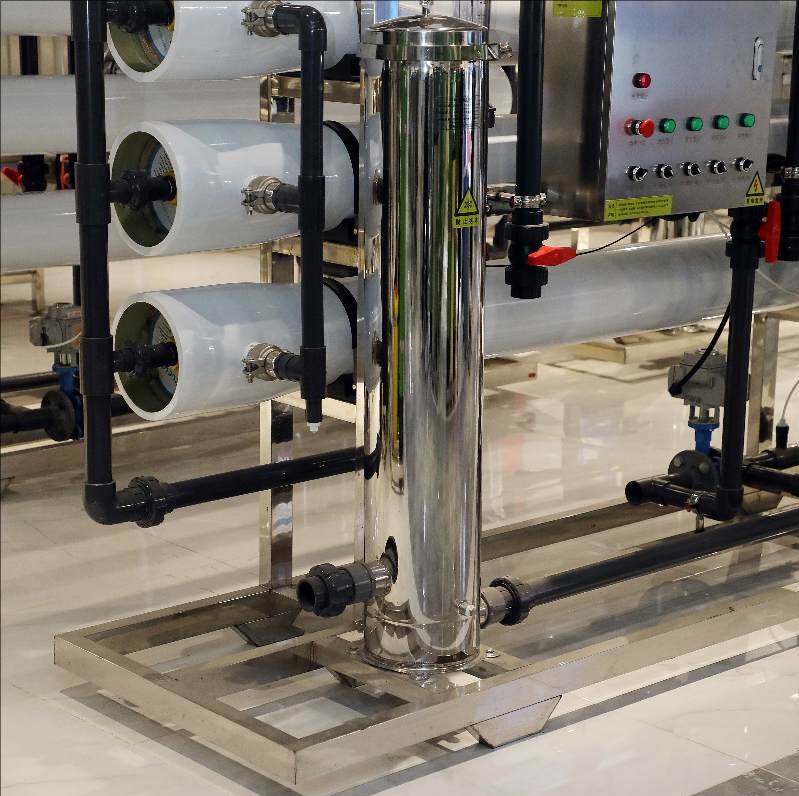
- Qingqingquan
- Shandong
- 20 days
- 300 units per month
Reduce water costs with our advanced water reuse systems for food industry. Deep purification equipment meets FDA standards, removing 99.9% contaminants. Custom solutions for dairy, meat, and beverage plants.
Water Reuse Treatment Systems for Food Industry
I. Technical parameters of the equipment and the overall process overview
The equipment is designed for the deep treatment of food wastewater that reaches the national discharge standards, using “ultrafiltration + reverse osmosis membrane separation” process, the water production capacity of 200 tons / day (can be customized according to the need for different water production equipment), the water produced is better than the national tap water standards. The produced water is better than the national tap water standard. The equipment is fully automatic controlled with inlet pressure of 0.2 - 0.3MPa and operating pressure of 0.3 - 1.5MPa.

Ⅱ. Pre-treatment of Water Reuse Treatment Systems for Food Industry
1. Flocculation dosing device
• Principle of action: Colloidal substances exist in food wastewater, which are stabilized in water due to power stability and electrification, and direct filtration is not effective. Add high molecular flocculant and high efficient flocculant ST (quaternary amine polyacrylamide), which is hydrolyzed in water to form a long chain of charged molecules, adsorbed colloids at both ends, forming large particles of impurities, which is convenient for filtration to reduce the load on the ultrafiltration, and improve the ultrafiltration operating conditions. At the same time, part of the organic matter in the flocculation process is adsorbed by the flocculent.
• Important significance: effectively remove colloids in water, guarantee the removal effect of subsequent multi-media mechanical filter on colloids, and create good conditions for ultrafiltration and reverse osmosis.

2. Activated carbon adsorption
• Principle of action: activated carbon has a large internal pore surface area, covered with micropores, with high adsorption capacity. A large number of hydroxyl and carboxyl groups on the surface can chemically adsorb organic substances of various natures, and can also adsorb substances through electrostatic gravitational force.
• Main functions: adsorption of organic matter in the raw water, some pigments and harmful substances, reduce chemical oxygen consumption COD; removal of humic acid, fulvic acid, lignosulfonic acid and other organic substances in water; removal of residual chlorine and other harmful substances on the reverse osmosis membrane to prevent oxidation of the reverse osmosis membrane. Usually removes 63% - 86% of colloidal substances, about 50% of iron, and 47 - 60% of organic substances.
• Important significance: to further purify water quality, reduce the burden of subsequent treatment, to ensure the normal operation and service life of the reverse osmosis membrane.

Ⅲ. Ultrafiltration (UF) link of Water Reuse Treatment Systems for Food Industry
1. Membrane Selection Points
• Impurity charged nature of the impact: impurities charged nature of the ultrafiltration flux has a significant impact on the selection of the membrane need to consider this factor.
• Water quality modulation: flocculants, oxidizers, etc. can modulate the water quality, significantly improve the fouling of the membrane, the rational use of ultrafiltration to help improve efficiency.
• Organic matter adsorption and fouling differences: organic matter adsorption and fouling due to different types of organic matter and great differences, need to choose the right membrane for specific water quality.
• Chemical stability of membrane material: chemical cleaning of membrane requires good chemical stability of membrane material, PVDF is currently a better choice.
• Cognition of raw water quality: understand the change rule of raw water quality, pollutant sources, clear membrane function limitations, avoid over-reliance on membrane treatment.
• Emphasis on pretreatment and system design: pay full attention to the complexity of the water source, emphasize the role of ultrafiltration membrane as pretreatment, and scientifically design the system parameters.
2. Process Characteristics and Operation Problems
• Process Advantages: Ultrafiltration device basically removes organic matter and colloid, easy to operate, low cost, no need to add chemicals.
• Operation problems: In the process of ultrafiltration, the retained substances accumulate on the surface of the membrane, resulting in the phenomenon of concentration polarization, leading to a sharp decline in membrane water permeability.
3. Importance of chemical cleaning
• Role: chemical cleaning of ultrafiltration membrane elements is crucial to the use of ultrafiltration, which can reduce the effect of concentration polarization, making it a reliable and economical reverse osmosis pretreatment method, effectively preventing the subsequent reverse osmosis membrane fouling and other phenomena, to ensure the efficiency of reverse osmosis production.
• Cleaning points: cleaning generally choose acid and alkali chemicals, according to the main components of the pollutants to determine a reasonable cleaning process, in order to achieve satisfactory results.

Ⅳ. Reverse osmosis link
1. process characteristics
• Treatment effect and cost: reverse osmosis technology to deal with wastewater effect is good, the device cost was higher, but with the development of membrane materials and high-efficiency membrane, the cost continues to decline. Used in heavy metal wastewater reuse treatment, one-time investment is relatively high compared with chemical method and adsorption method, but no need to add drugs, the treated effluent can be directly reused in the workshop, the operation cost is low, saving water consumption.
• Work condition parameter control: the main work condition parameters of reverse osmosis device are PH, temperature and operating pressure of feed water, etc. In the process of operation, the process parameters should be reasonably selected according to the requirements of raw water quality to improve the quality of effluent water.
2. Chemical cleaning and backwashing
• Chemical cleaning: after long-term operation of the reverse osmosis device, the membrane surface will accumulate various pollutants, resulting in performance degradation, and must be cleaned and disinfected regularly. Cleaning should be based on the membrane material and the type of pollutants to choose the appropriate cleaning agent.
• Backwashing: Regular backwashing can minimize membrane scaling, ensure membrane flux and prolong membrane service life.
V. Summary
The depth treatment equipment for water reuse in food industry realizes efficient treatment and reuse of food wastewater through the synergy of pretreatment, ultrafiltration and reverse osmosis. The links are interrelated and interact with each other, pretreatment lays the foundation for subsequent treatment, ultrafiltration as pretreatment effectively reduces the burden of reverse osmosis, and reverse osmosis realizes deep treatment and reuse.


how to treat wastewater in food industry
zero liquid discharge systems for food plants
food-grade water reuse technology





































